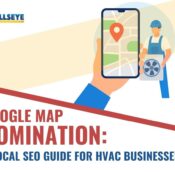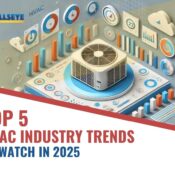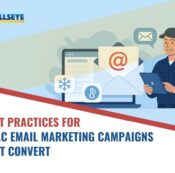
Click, Convert, Repeat – Proven PPC Success Strategies in the Home Automation Sector
Maximize your home automation PPC campaigns with targeted strategies like Smart Home PPC Campaigns, effective retargeting, and optimized landing pages. Boost click-through rates, improve conversion tactics, and utilize the best PPC keywords to drive consistent results and ROI.
Call Now For The Expert Digital Marketing Solutions: 561-277-0148
Introduction:
The home automation industry has evolved significantly over the past few years, with more homeowners seeking ways to integrate technology into their everyday lives. Whether it’s controlling lighting, security, or climate from a smartphone, the demand for smart homes is growing rapidly. As the competition increases, businesses in the home automation sector must focus on effective marketing strategies to stay ahead. One of the most powerful tools available for generating leads and driving sales is Pay-Per-Click (PPC) advertising. In this blog, we will explore proven PPC success strategies for the home automation sector, focusing on how to use Home Automation Lead Generation PPC to attract, engage, and convert high-quality leads.
What is Home Automation Lead Generation PPC?
Home Automation Lead Generation PPC refers to a set of strategies aimed at driving potential customers (leads) to a business’s website or landing page through paid search ads. The goal is to attract individuals interested in smart home technology and convert them into paying customers. By targeting highly relevant keywords and demographics, businesses can use PPC to generate quality leads and drive more sales for their products or services.
In the home automation industry, where products and services can be complex, Home Automation Lead Generation PPC becomes essential. Homeowners are increasingly looking for simple, convenient ways to control their environments. By leveraging PPC campaigns that focus on home automation, businesses can directly connect with these potential customers when they are actively searching for solutions.
Smart Home PPC Campaigns: The Foundation for Success
Smart Home PPC campaigns are the backbone of any home automation business’s paid advertising efforts. The key to creating a successful PPC campaign lies in strategic planning and precise execution. A well-designed Smart Home PPC campaign targets specific keywords related to smart home products or services, such as “smart lighting installation,” “home security systems,” or “home automation solutions.”
Here’s what you need to know about Smart Home PPC Campaigns:
- Targeting the Right Audience: Focus on the ideal customer segment — individuals who are interested in upgrading their homes with the latest smart technologies. With tools like Google Ads, you can create audience segments based on location, income, interests, and search behavior.
- Keyword Research: Identifying the best keywords for your smart home PPC campaigns is essential for reaching the right customers. Using long-tail keywords such as “affordable smart home devices” or “best smart thermostats” can help increase the chances of your ad showing up for relevant searches.
- Ad Copy Optimization: Craft compelling ad copy that speaks directly to your target audience. Emphasize the benefits of home automation, such as convenience, security, and energy efficiency. Include strong calls-to-action (CTAs) like “Get Your Free Consultation” or “Shop Smart Home Solutions Now.”
Winning Paid Ads for Home Tech: Crafting the Perfect Ad
Creating winning paid ads for home tech involves a deep understanding of your customers’ needs and pain points. In the home automation sector, you need to sell not just a product, but a solution that enhances their quality of life. Here’s how to craft winning paid ads:
- Highlight Key Benefits: Focus on the specific benefits of home automation, such as enhanced security, energy savings, or ease of control. Homeowners want to know how smart home solutions will improve their daily lives, so make sure your ads emphasize these features.
- Leverage Ad Extensions: Use ad extensions to increase visibility and provide additional information, such as pricing, location, and links to relevant pages on your website. Ad extensions help your ad stand out in search results and give potential customers more options to engage with your business.
- Use Strong Calls-to-Action (CTAs): A compelling CTA is crucial to driving conversions. Whether it’s “Schedule Your Smart Home Demo Today” or “Explore Our Smart Home Solutions,” your CTA should prompt users to take immediate action.
Home Tech PPC Click Rate Boost: Maximizing Engagement
A high click-through rate (CTR) is one of the most important metrics for PPC campaigns. In the home automation industry, where competition is fierce, achieving a high CTR requires continuous optimization of your ads and targeting. Here’s how you can boost your Home Tech PPC Click Rate:
- Test and Optimize Your Ads: A/B testing is one of the most effective ways to boost your PPC CTR. Test different headlines, descriptions, and CTAs to see what resonates most with your audience. Make data-driven adjustments to improve your click rate over time.
- Ad Placement and Timing: Consider the placement of your ads across different platforms. Google Search and Google Display Network are both excellent options for reaching potential customers. Additionally, schedule your ads to appear at times when your target audience is most likely to be online.
- Leverage Audience Segmentation: Segment your audience based on factors such as age, interests, location, and device preferences. This allows you to create highly personalized ads that are more likely to attract clicks.
PPC Landing Page Optimization: Turning Clicks into Conversions
It’s not enough to simply get clicks; you need to turn those clicks into conversions. PPC landing page optimization is crucial for improving your conversion rate and maximizing the return on your PPC investment. Here’s how to optimize your landing pages for home automation leads:
- Consistency with Ad Messaging: Ensure that your landing page aligns with the messaging in your ads. If your ad promises a free smart home consultation, make sure the landing page emphasizes this offer clearly and prominently.
- Compelling Visuals and Copy: Use high-quality images and videos that showcase your products in action. Include customer testimonials, reviews, and product demos to build trust and encourage conversions.
- Strong CTAs: Just like in your ads, your landing page should feature strong CTAs. Make it easy for visitors to take action by keeping forms short and placing CTA buttons in prominent locations.
Best PPC Keywords for Home Automation: Finding the Right Terms
Choosing the best PPC keywords for home automation is vital for ensuring your ads appear in front of the right audience. The more targeted your keywords, the higher the likelihood of attracting high-quality leads.
- Long-Tail Keywords: Use long-tail keywords such as “best smart thermostats for homes” or “automated home lighting systems.” These keywords are often less competitive and attract users who are further down the sales funnel.
- Use Negative Keywords: Negative keywords help filter out irrelevant traffic and reduce wasted ad spend. For example, if you’re selling high-end home automation products, you might want to exclude keywords like “cheap smart home devices” or “budget home automation.”
- Keyword Research Tools: Use tools like Google Keyword Planner, SEMrush, or Ahrefs to identify relevant keywords and gauge their competition. These tools provide insights into search volume, competition, and trends, helping you make more informed decisions.
Smart Home Retargeting Ads: Keeping Your Leads Engaged
Retargeting ads are one of the most effective ways to keep your leads engaged and encourage them to return to your site. Smart Home Retargeting Ads target users who have previously interacted with your website but did not convert.
- Dynamic Retargeting Ads: Use dynamic retargeting to show personalized ads based on the products or services the user viewed on your site. For example, if a user viewed smart thermostats, your retargeting ad could feature a special offer or additional information about that product.
- Frequency Capping: Retargeting ads can quickly become annoying if shown too frequently. Implement frequency capping to limit how often your ads appear to the same user. This ensures you stay top of mind without overwhelming potential customers.
Google Display Ads for Home Tech: Expanding Your Reach
Google Display Ads are an excellent way to expand your reach and promote your home automation products to a broader audience. These ads can appear across millions of websites, mobile apps, and videos on the Google Display Network.
- Visual Appeal: Display ads are all about visuals. Use high-quality images that showcase your products in action. Include a compelling headline and CTA to encourage users to click through to your landing page.
- Targeting Options: Take advantage of Google’s advanced targeting options, such as audience interests, demographics, and topics. You can also retarget users who have previously visited your site but didn’t convert.
PPC Conversion Tactics for Smart Homes: Converting Leads into Customers
To truly succeed in PPC advertising for home automation, you need to focus on conversion tactics that turn leads into customers. Here are a few tips to improve your conversion rate:
- Offer Value: Provide offers such as free consultations, product demos, or exclusive discounts to encourage users to take the next step in the buying process.
- Build Trust: Display trust signals such as customer reviews, industry certifications, and secure payment options to reassure users that they are making a safe and informed decision.
PPC Bidding for Home Automation: Managing Your Budget Wisely
PPC bidding is essential for maximizing your ROI. With the right bidding strategies, you can ensure that your ads are shown to the right audience at the right time, without exceeding your budget.
- Bid Adjustments: Use bid adjustments to increase or decrease your bid based on factors such as device type, location, time of day, and more. For example, you might increase bids for users on mobile devices or in high-value locations.
- Smart Bidding Strategies: Consider using Google Ads’ Smart Bidding strategies, such as Target CPA (Cost-Per-Acquisition) or Target ROAS (Return on Ad Spend), to automate bidding and optimize for conversions.
Measuring Success: Metrics for Home Automation PPC Campaigns
Finally, measuring the success of your Home Automation Lead Generation PPC campaigns is crucial. Key performance indicators (KPIs) to track include:
- Click-Through Rate (CTR): The percentage of users who click on your ad after seeing it. A higher CTR generally indicates that your ad is relevant and engaging.
- Conversion Rate: The percentage of visitors who take the desired action on your landing page (e.g., filling out a form or making a purchase).
- Cost-Per-Click (CPC): The average cost you pay for each click. Lower CPCs can lead to a better ROI.
- Return on Ad Spend (ROAS): The revenue generated from your PPC campaign divided by the cost of the campaign. This metric helps determine the overall profitability of your campaigns.
Conclusion
In the fast-paced and competitive home automation sector, leveraging Home Automation Lead Generation PPC strategies can make all the difference in driving high-quality leads and converting them into customers. By focusing on smart home PPC campaigns, optimizing landing pages, utilizing retargeting ads, and carefully selecting keywords, businesses can generate significant ROI from their PPC efforts. With the right tactics, your home automation business can stay ahead of the competition, continually attracting and converting new customers.
FAQs:
What are the best PPC platforms for home automation businesses?
The best PPC platforms for home automation include Google Ads for search-based targeting, Bing Ads for less competition, and social media platforms like Facebook and Instagram for demographic targeting.
How can I improve my home automation PPC click-through rates?
Improve your CTR by refining your keyword targeting, writing compelling ad copy, using A/B testing, and optimizing landing pages for seamless user experiences.
What should my budget be for a smart home PPC campaign?
Start with a modest budget, monitor performance, and adjust based on results, using tools like Smart Bidding to optimize spend and maximize return on investment.
Why is retargeting important in home automation PPC?
Retargeting is important because it re-engages users who have shown interest in your products, increasing the chances of conversion by displaying personalized ads.
How do I optimize my landing pages for home automation ads?
Optimize landing pages by aligning them with ad copy, ensuring fast load times, and using clear CTAs, high-quality images, and customer testimonials to enhance trust.




